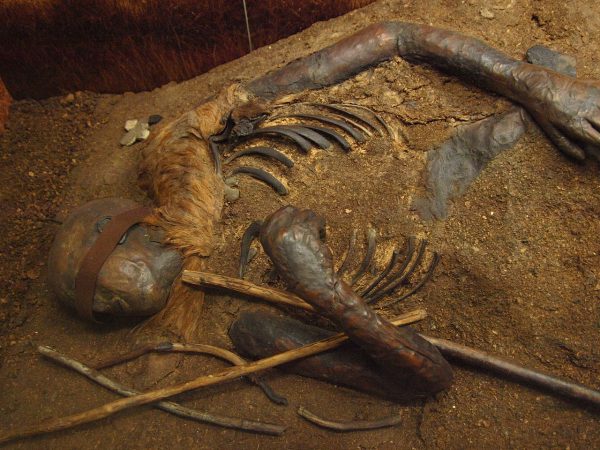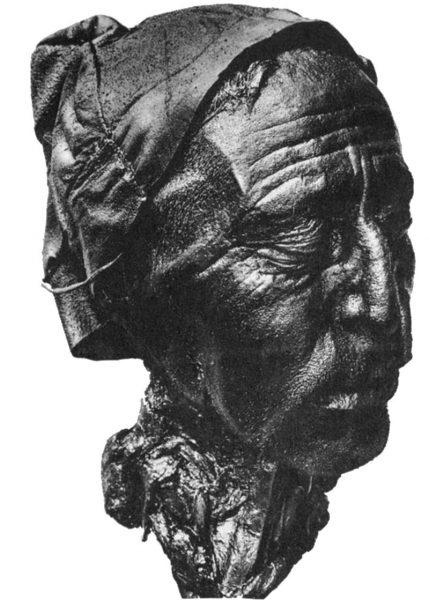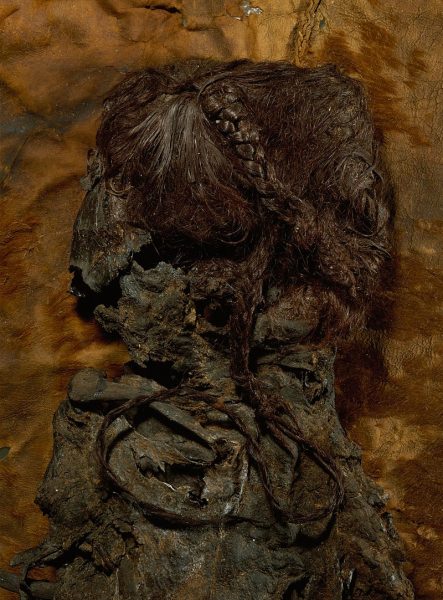The Bog Bodies of Northern Europe Perfectly Preserved After 1000s of Years
During the Iron Age in Europe, cremation was the most common method for disposing of the dead. However, over the years, the wetlands of Northern European countries such as the United Kingdom, Ireland, Denmark, Germany, and the Netherlands have also yielded a number of ancient remains.
Those remains, often referred to as bog bodies, are usually in a remarkable state of preservation for their age because of the oxygen-poor environment and the anti-microbial properties associated with the peat and sphagnum moss that proliferate there.
Those two factors significantly slow down the rate of decay, so that some of the bodies that have been discovered are in an astonishing state of preservation, still having hair, fingernails, and facial features.

Because cremation was the usual funerary practice, and because so many of the bog bodies show clear evidence of torture or violent death, it’s likely that being put in a bog was a relatively unusual way of disposing of someone.
According to the History Channel, many experts have concluded that the bog bodies were a form of ritual sacrifice.
Although it’s hard to say for certain, the general consensus among experts is that around 700 bog bodies have been discovered in Europe. Some of them are more noteworthy than others.
For example, in 2013 ABC reported on the discovery of the oldest remains of this type that had ever been found with intact skin.
https://www.youtube.com/watch?v=lYAz9i40pBA
Cashel Man, named for the bog he was found in, was discovered by a local resident who was digging for peat moss, and is about 4,000 years old – nearly twice as old as most of the other bog bodies that have been found.
While he was being studied by local experts, they discovered that one of his arms and his spine had been broken in several places before his death. It looked as if the breaks were the result of being hit with something.
There were also wounds on his back that appeared to be axe wounds, and they found axes that could have been used to make the wounds in the same area.
The best-preserved example ever found is known as Tollund Man. He was discovered in Denmark in 1950, by some people who were out digging peat. He was in such good condition that the people who found him contacted the police, thinking they had found a fresh murder victim.

When the police discovered he’d been found in a bog with no other recent signs of digging, they concluded he was actually a case for the Museum Silkeborg, where Tollund man now resides.
The body was found naked except for a leather cap on his head and a noose of two interwoven leather strips around its neck. He had been hung, but in a way that caused him to die from suffocation rather than being strangled outright.
While there are no records to tell us if he was executed or committed suicide, the writings of Tacitus say that at least one Germanic tribe of the area perpetrated human sacrifice, and also that certain types of criminals were ‘pressed down under a wicker hurdle into the mud of a bog.’

Despite Tacitus’s commentaries, experts don’t believe Tollund Man was submerged in the bog as a criminal. His remains were found curled as if her were sleeping, and experts say his eyes and mouth were carefully closed before he was submerged, none of which suggests the people who put him there bore him any ill will. Instead, they think he was given as a sacrifice to the gods.

The youngest bog body ever found was that of Rost Girl, who was found in Germany in 1926. She was only about three years old at the time of her death, around 200 BC. There’s very little information available about her, as her remains were destroyed during World War II.
Graubelle Man was discovered in Jutland, Denmark, and is, perhaps, the specimen who had the most grisly death. Although many bog bodies were found to have been hanged, stabbed, or bludgeoned, Graubelle Man suffered from a combination.

He had a broken leg, had clearly been hit on the head, and his throat had been slit from ear to ear. Another thing he’s famous for is that he was one of the first things ever to be carbon-dated, as radiocarbon dating was a new technology around the time when his remains were discovered. He was determined to have been sunk in the bog between 400-200 BC.
Europe’s bog bodies come from several different countries and are found in a variety of conditions. It would be unrealistic to suppose that every region submerged some of their dead for the same reasons.
It’s a girl! 13-year-old ‘Amazon warrior’ Lived 2,600 Years-Ago
So much about them remains a mystery, and each of their discoveries has caused experts to have more questions about the ancient people their remains represent. Each new discovery also gives those same experts a few new nuggets of information about the people of our distant past, quite literally giving them faces.





